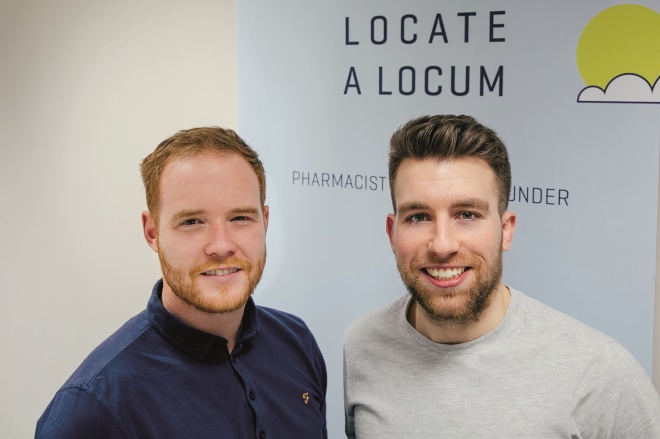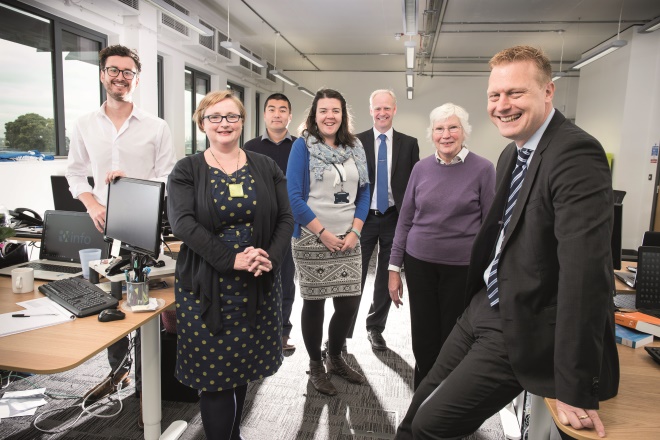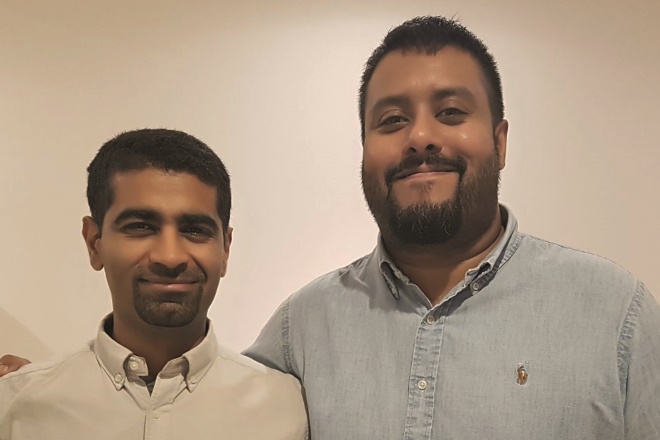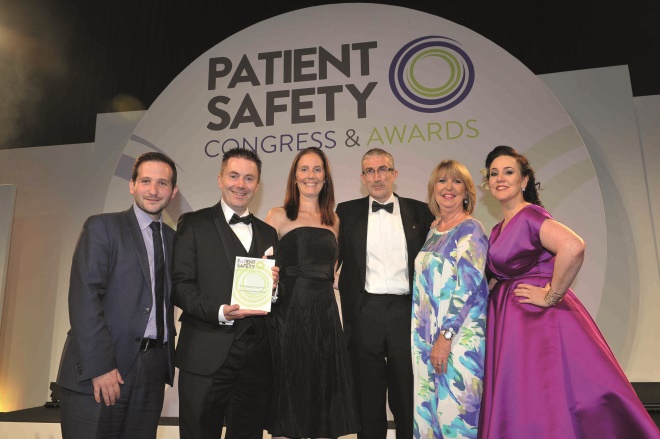
Shutterstock.com
Pharmacists are now presented with a multitude of opportunities to launch software businesses, create clever apps, or to move into salaried IT posts with suppliers of health technology systems to improve patient care.
For those pharmacists wanting to create their own health technology start-up, entrepreneurial confidence is a prerequisite, but being a tech geek isn’t. Most pharmacists work with professional developers rather than trying to write their own code or build their own web-based solution. The option of working for an established technology company can also be very rewarding. The tech firms selling kit into the healthcare sector need pharmacists’ clinical knowledge to ensure their software meets a hospital or community pharmacy’s specific requirements as well as current needs.
The Royal Pharmaceutical Society’s (RPS) informatics advisor Stephen Goundrey-Smith is a consultant pharmacist at PDC Healthcare, which provides patient identification solutions such as patient identification wristbands. He is also the author of the book IT in Pharmacy: An Integrated Approach published in 2012. He says tech has made pharmacy services more effective and efficient, from electronic prescribing to robotics in hospitals, so it is understandable why more pharmacists are considering a move into software development.
After working as a hospital pharmacist, Goundrey-Smith joined software firm Torex in 2002 having achieved an MSc in information science, which had a pharmaceutical management and IT element. “This growth in health tech means there is a need for people with clinical knowledge to be more involved in software design,” he says.
Tech trailblazers
Here are some examples of pharmacists who are glad they made the move into technology.
Locate a Locum
Former locum pharmacist Jonathon Clarke founded the Locate a Locum website in Belfast initially as a ‘bedroom business’ to bring pharmacists and pharmacies together. The service is now nationwide and used by the multiples, including Boots and Lloyds Pharmacy, as well as by a growing number of independents. It now has 3,200 pharmacists registered on its booking platform with 5000 shifts accessed from 8,000 clients every month.
Clarke says innovation was lacking in the locum job market and his knowledge of pharmacy allowed him to design and implement the recruitment tool. The idea was backed by business development body Invest NI which provided funding of £200,418 to pay for research and development, marketing and to hire staff. “As a locum I used to hand out business cards to pharmacies but these would get lost or forgotten so it was clear that an electronic solution was needed,” he says. “I started with a one-page website with my details but this quickly grew to include details of other locums.”

Courtesy of Locate a Locum
Former locum pharmacist Jonathon Clarke, left, with Michael Budden, software developer, started the Locate a Locum website which now has 3,200 pharmacists registered on its booking platform with 5,000 shifts accessed from 8,000 clients every month
The service is free for locum pharmacists with pharmacies paying a fee when they use the service to find temporary cover. When Clarke decided to scale up the business he began working with software developer Michael Budden. The two men were accepted onto the Entrepreneurial Spark programme in Northern Ireland and secured office space and business mentoring funded by Ulster Bank. There are now 12 people working for Locate a Locum and in September the business relocated to the gas works facilities in Belfast. “My advice to other pharmacists with a software idea is to take the plunge,” says Clarke. “As an industry, pharmacy is naturally risk-averse but with a pharmacy degree the world is your oyster and you must not be afraid to step out of your comfort zone.”
RX-info
Colin Richman graduated from The University of Wales in Cardiff 25 years ago and had a varied pharmacy career before deciding to move into software development. He worked as a clinical and formulary pharmacist in secondary care, as a pharmaceutical advisor and primary care support pharmacist for a primary care trust (PCT), and as a development pharmacist working with the Swedish National Drug Statistics system.
He first became aware of the career opportunities in technology while performing formulary work in Devon. He could see there was a pressing need for current and relevant data and information to enable medicines usage to be closely monitored for quality, safety and cost.
At the end of the 1990s when the internet was a new phenomenon, he built a basic web page that GPs and hospitals could access. Within weeks, about 50% of formulary usage was via the internet. “I realised this was the future and that technology was an area I enjoyed working in,” says Richman.

Courtesy of RX-info
Colin Richman, far right, launched RX-info providing chief pharmacists and NHS Hospital Trusts with medicines usage data based on observations he made in Sweden where, he says, pharmacy IT was more advanced than in the NHS
While working in a clinical role in Sweden he noticed how pharmacy IT was more advanced than it was in the NHS. He returned to the UK in 2003 and launched RX-info providing chief pharmacists and NHS Hospital Trusts with medicines usage data. “Our software helps primary and secondary care professionals work quickly and efficiently. With expert data and reports it ensures best practice throughout the industry,” says Richman. “It was critical that I was a pharmacist because for the business to work it requires an understanding of medicines and an ability to talk to colleagues on a professional basis.” He now employs five pharmacists at RX-info and their expertise in analysing medicines usage, pharmacy process and in tracking budgets and drugs mapping is invaluable.
Initially he was working on his new company in the evenings and at weekends and teaching himself the necessary IT skills before deciding to use professional developers. Richman urges pharmacists that want to take a similar career path to enhance their own tech skills while still in a clinical role. “Pharmacists should follow their gut feel if they have a great idea, such as a health app.”
Richman’s fellow director at RX-info is Jonathan Kerr who had previously worked as a strategic development officer at Devon Local Pharmaceutical Committee supporting, developing and negotiating NHS services for community pharmacists. Before that he was involved in medicines management for Mid Devon PCT.
Written Medicine
Ghalib Khan is a former pharmacy dispenser and manager who created Written Medicine in 2012 to increase access to medicines information for patients who struggle to read English.

Courtesy of Written Medicine
Murtada Alsaif (left) and Ghalib Khan co-founded Written Medicine in 2012 to ensure the medication safety of their non-English speaking patients
Khan started his career as a pharmacy technician and spent eight years working in pharmacies in multicultural areas of London before he launched his cloud-based software which creates a database of hand-compiled phrases translated by professional interpreters. The last stage of the process is tested by a pharmacist literate in the translated language. This includes Arabic, Bengali, French, Hindi, Polish, Tamil and Punjabi. “I was working in a pharmacy just off London’s Edgware Road where we saw many people who only spoke Arabic or Bengali, so we started to hire local staff who had the language skills and they would write instructions on medicines,” says Khan. “We realised there was a wider issue here and a more professional solution was needed.”
Khan admits he had no technology experience so he asked a software developer to create a prototype for Written Medicine and the service was trialled at one hospital in Ealing. Initially he struggled to get the idea into other hospitals because it was difficult to integrate the software into existing IT systems. “Progress can be frustrating so you need patience and determination to keep plugging away if you are convinced your idea will make a difference,” says Khan.
Today the software uses around 3,000 phrases in 10 languages while 5,000 drugs have been mapped. Being a pharmacist and bilingual has helped Khan to progress his career in software, and running Written Medicine is now a full-time job. He works alongside another former pharmacist Dr Murtada Alsaif.
Refer-to-Pharmacy
Alistair Gray is the clinical services lead pharmacist at East Lancashire Hospitals NHS Trust and the man behind Refer-to-Pharmacy. This electronic tool launched 12 months ago and allows bedside referral of patients to their community pharmacist to improve post-discharge medicines adherence.

Courtesy of Alistair Gray
Refer-to-Pharmacy started by pharmacist Alistair Gray, smooths the discharge process by directly referring patients at the hospital bedside to their community pharmacist for post-discharge support
Gray’s vision took two and a half years to come to fruition but the service is now being used by five hospitals in Lancashire and is about to go live in Cheshire. He has managed to secure some funding for Refer-to-Pharmacy via a tripartite arrangement between East Lancashire Hospitals NHS Trust and the East Lancashire and Blackburn with Darwen clinical commissioning groups.
The technology makes it easier for hospital pharmacists and pharmacy technicians to refer patients from their hospital bedside directly to their community pharmacist for post-hospital discharge support. It reduces dispensing time and medicines waste, and helps hospitals to meet one of the requirements of NICE’s NG5 Medicines Optimisation guidan ce. This states that, where possible, a consenting person’s medicines discharge information should be shared with their nominated community pharmacy. “There was a need for a quick electronic service,” says Gray. “As a pharmacist rather than a technology expert it was my role to describe what I wanted the tool to do.”
Refer-to-Pharmacy won a Patient Safety Award in July 2016 with the judges calling it a low-cost and easy way to integrate hospital pharmacy with the community pharmacy and improve the effectiveness of discharge planning.

Courtesy of Alistair Gary
The Refer-to-Pharmacy team receiving their award for Patient Safety in July 2016
Learning the basics
Every day pharmacists see first hand how technology is improving healthcare and a growing number are now moving into software development roles to make new tech ideas a reality. We see pharmacy entrepreneurs launching apps, non-techy pharmacists working alongside software developers and others taking jobs with technology companies to share their industry expertise.
For pharmacists interested in learning more about the field there are a number of online courses that will teach the basics of software development. Microsoft, for instance, has a virtual academy. Other ways into the industry are through existing health tech businesses that recruit pharmacists to plug gaps in their industry knowledge.
Reading this article counts towards your CPD
You can use the following forms to record your learning and action points from this article from Pharmaceutical Journal Publications.
Your CPD module results are stored against your account here at The Pharmaceutical Journal. You must be registered and logged into the site to do this. To review your module results, go to the ‘My Account’ tab and then ‘My CPD’.
Any training, learning or development activities that you undertake for CPD can also be recorded as evidence as part of your RPS Faculty practice-based portfolio when preparing for Faculty membership. To start your RPS Faculty journey today, access the portfolio and tools at www.rpharms.com/Faculty
If your learning was planned in advance, please use the: Planned Learning form
If your learning was spontaneous, please use the: Unplanned Learning form


